Stop sunburn peeling on your skin with our tips and tricks. You may get sunburn from the scorching sun and your skin starts to peel after a few days. And with this, perhaps comes a very strong urge to peel those dead skin off. But you must stop right there! Dr. Shari Lipner, a professor of dermatology at the Weill Greenberg Center, advises not to peel the skin as it can make it prone to infection. Unfortunately, skin peeling is a common condition after sunburn that makes skin awful, itchy, and inflamed. The peeling of your skin is a sign that your body is healing from an agonizing sunburn.
Through the process of peeling, your body repairs its damaged cells, which is quite harmless. But certainly it is a tough phase that takes lots of patience and care to heal completely. There are other various causes of skin peeling, other than sunburn. Two of these causes are autoimmune disease and a negative reaction to any medication. So, while your skin is going through sunburn peeling, it’s best to let your body heal and repair on its own. Once the sunburn has gone, the skin peeling will cease gradually. Usually, moderate burns take about a week to heal. As for getting some relief, this article will cover the best solutions to treat skin peeling, along with tips to avoid sunburn next time you step outside.
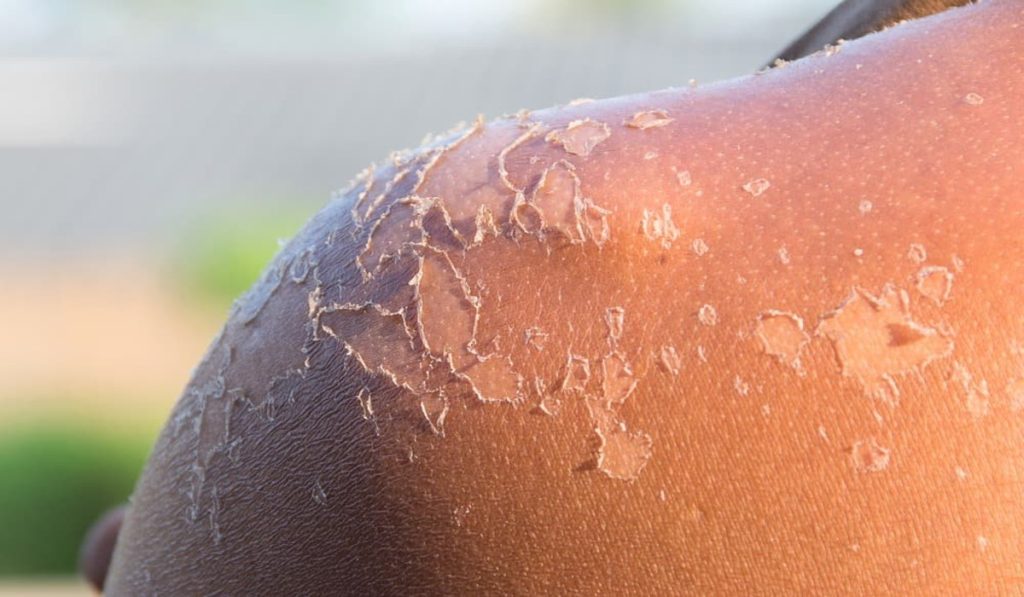
What Causes Your Skin To Peel After A Sunburn?
Sunburn occurs when your skin receives more than enough sunlight, causing damage from the sun’s UV rays. Mostly, after getting sunburn, there is flaking and peeling of skin in the outermost layer of skin, which is called epidermis. This is how your body wants to get rid of damaged cells and pave the way for new, unspoiled skin cells. This entire process is quite natural. After the initial stage of sunburn, skin peeling starts roughly after a few days. The skin itself starts to exfoliate through peelings to eliminate the burns and damaged skin cells. Once the peeling begins, the skin will be back in its normal form in just one week.
Know Other Causes Of Skin Peeling
Sunburn is not the only cause behind skin peeling. While skin peeling is regarded as a healing process for skin to make room for new cells, there are different causes responsible for skin damage. Here we will discuss some major causes of skin peeling.
- Skin irritation can cause you skin peeling. When your skin is chafed due to constant rubbing with another skin, clothes, or shoes for a longer period, skin can start to peel.
- Chemical peels like retinol exfoliating the upper layer of your skin helps to prevent wrinkles, fine lines, and scarrings.
- Skin can peel due to thermal burning. Such burns are caused by direct contact of skin with fire, liquid, or a surface.
- Chemotherapy and radiation for cancer patients can lead to skin peeling.
- Atopic dermatitis or eczema can turn your skin red by causing peeling. There is another type of eczema called dyshidrotic which gives blisters and rough scales on different body parts.
- Edema is swelling of skin, particularly affecting the feet and legs. This can arise if an individual is suffering from sudden heart failure, multiple blood clots, or liver disease.
- Infectious disease like ritter or staphylococcal scalded skin syndrome is a type of condition where bacteria can cause skin peeling.
- Toxic shock syndrome is a rare disease that causes bacterial infections in the skin. This happens when germs enter the body, causing it to release toxins.
- Peeling skin syndrome is a common genetic skin disorder where the skin peels across the body or on the feet and hands.
- Using certain types of acne treatments like a retinoids serum or cream can make the skin peel.
- Mononucleosis and measles are two viral infections that cause rashes, which peel off the skin.
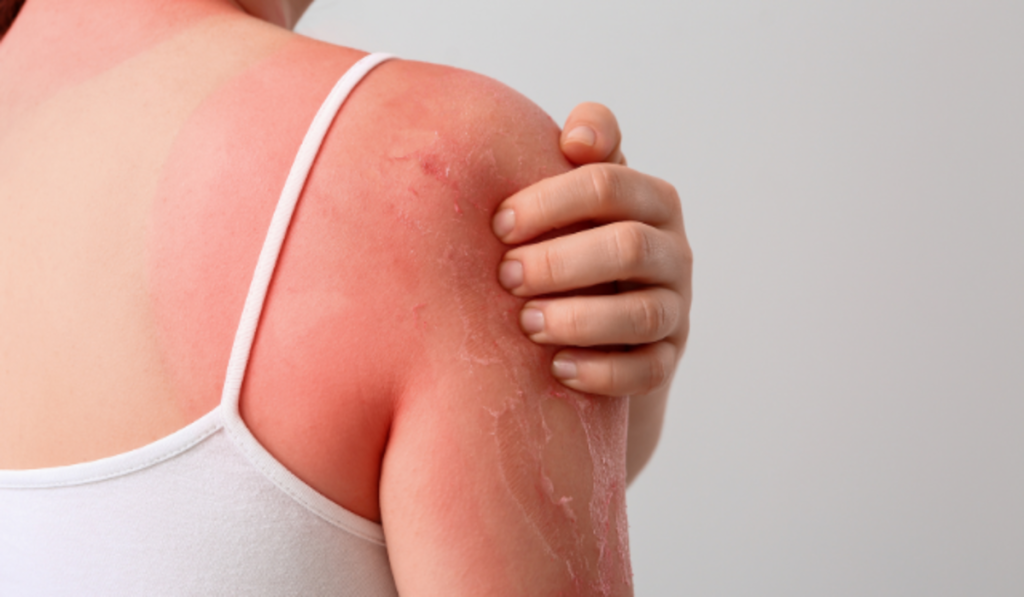
How Do You Treat Sunburn: The First Step Towards The Burn
Treating your sunburn immediately will encourage fast healing by reducing the consequences. So, there are some do’s and don’t you need to follow to treat the burns. Read both do’s and don’ts of treating your burns right away.
Do’s Of Treating Sunburn
- Hurry up and take a shower with cold water to cool the burning sensation of your skin. However, it gives a temporary relief to the discomfort.
- Give some cold compressions by adding a few cubes to a soft cloth.
- Spread some readymade aloe vera gel on the burns, especially directly after the shower. You can keep the gel in the refrigerator and apply it to get a cooling effect. The anti-inflammatory properties of aloe vera works great as a natural moisturizer and it may help to minimise the risks of peeling afterwards.
- Take any painkiller within a few hours of sunburning to reduce the swelling and pain. Aspirin and ibuprofen are two popular kinds of over-the-counter painkillers that work for burns. Don’t take these medicines unless your doctor has told you to.
- If your burn looks tremendously bad and is painful, you may apply hydrocortisone gel, only after reading the label for directions.
- Drinking plenty of water can save you from becoming dehydrated. Burns take a worse turn when the body lacks water. Moreover, sunburns are a result of dehydration.
- Keep away from direct sun exposure after the sunburn. Wearing protective SPF clothes to block UV rays is a smart move to protect your skin.
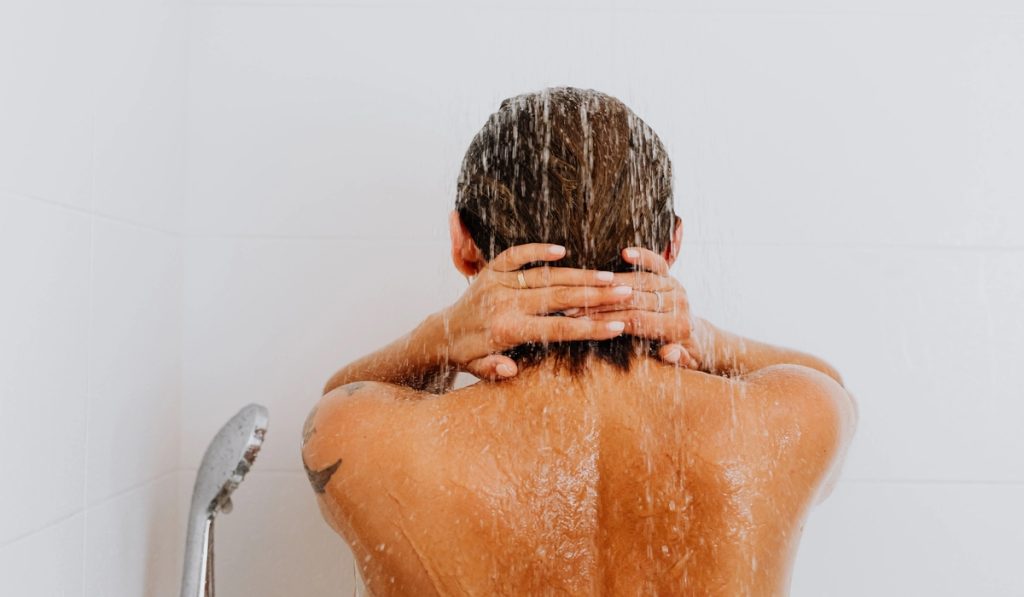
Don’ts Of Treating Sunburn
- Never apply any harsh soap over the areas of sunburn. Instead, choose any hydrating body wash to cleanse the affected areas.
- Don’t take a hot bath. Hot water can cause irritation to the burns, so cold water is best to find some ultimate relief.
- Avoid using an oil or petroleum jelly on the burns because they are likely to cause more irritation that might take time to heal.
- Rubbing your skin too hard during this time with hands or brush can cause unnecessary inflammation.
How Do You Treat Sunburn Peeling: Treat The Peeling Skin
If your skin continues to peel even after so many efforts, you might need to follow our guide below.
Do’s Of Treating Sunburn Peeling
- Continue applying aloe vera moisturiser or gel daily. Apply it twice or more as per the requirement. This is to speed up the healing process, besides softening the dead skin and reducing your desire to remove the skin.
- When your skin has started to peel, avoid exposing the skin too much to the sun. During this phase, your skin is damaged and the UV rays can do more damage. So, staying out of the sun can do more good to your skin.
- If there is no choice left for you other than to step out in the sun, then keep your skin covered with hats, scarfs, full sleeved clothes, etc. Here, we want to motivate you to wear specific protective clothing with SPF and sunscreen all over your body.
- Again, drinking enough glasses of water is important to recover your skin from unrestricted peeling.
- Try a humidifier to keep your skin from drying out. Humidifiers help to hydrate your skin by adding moisture to the air.
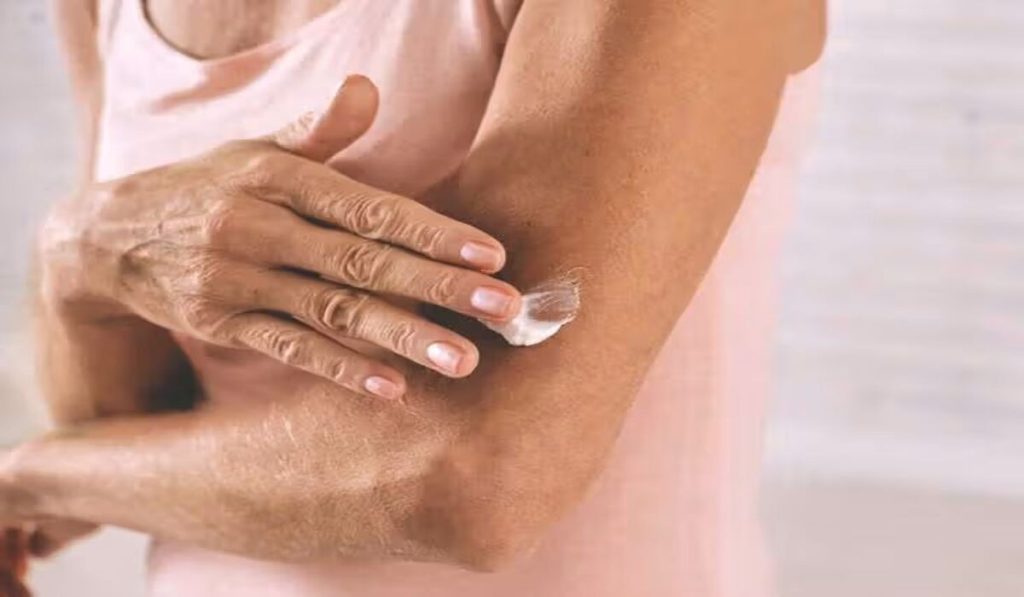
Don’ts Of Treating Sunburn Peeling
- Don’t ever scrub the skin with loofah or any physical scrubs.
- Removing the dead skin with fingers must be avoided. Unless your dead skin comes off by itself, don’t peel because the new skin inside is still raw and on exposure it can become infected.
- Skip going to tanning beds. The ultraviolet radiation of these beds can quickly cause more burn and worsen the peeling.
- Take a break from skincare actives like retinol, salicylic, glycolic acids or any scented products. While your skin is healing, it’s best to avoid them so they don’t irritate.
How Long Does The Skin Peeling Take To Go?
Most cases show that the peeling starts after three or four days of sunburn. So if it is so with you too, your peeling may stop as soon as your burn gets healed. And this whole process might take a week for mild to moderate burns. For more severe burns, the healing process may take as long as several weeks. Sunburn and skin peeling of severity need medical attention. Therefore, monitoring your sunburn is important to observe further signs, including those of:
- Blisters covering large areas of your body like on the back.
- Sudden high fever or shiverings.
- Dizziness or temporary memory loss.
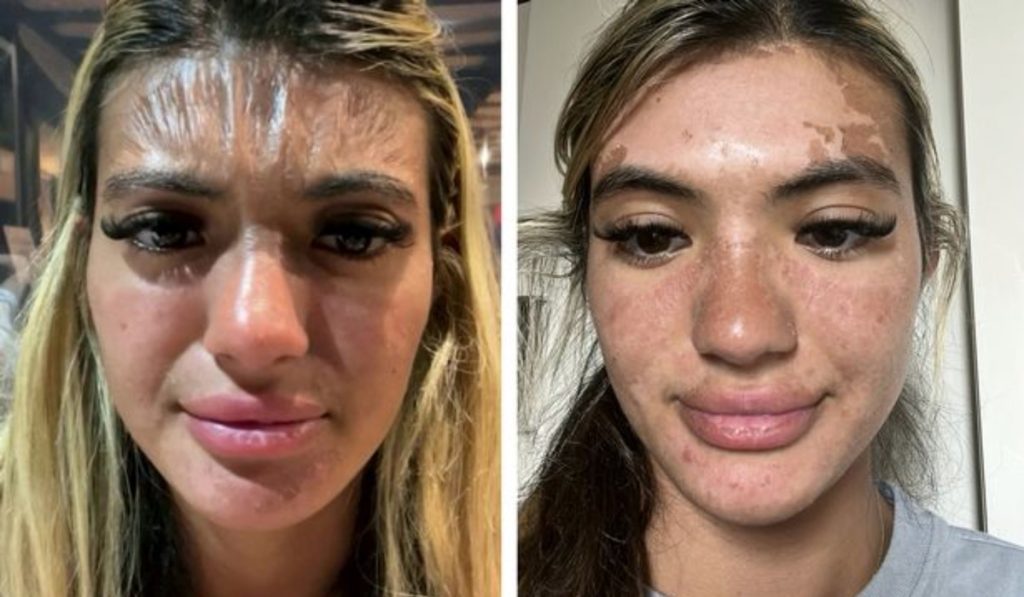
Who Is More Prone To Sunburn And Skin Peeling?
Research says sunburn peeling on skin remains as one of the most common problems among people. And we could find evidence of this in a published article of Jama Dermatology. They claim that this has spread widely. Campaigns conducted to spread awareness for skin cancer that sunburn causes have typically failed to make an impact. Therefore, the problem still persists. So all we can say is that sunburn and skin peeling can occur in anyone. However, according to some studies, young adults, brown people, or people with sensitive skin are more prone to suffer from sunburn and skin peeling. Furthermore, people who take tanning treatments, spend most time out in the sun, or are obese are at high risks.
Takeaway
Peeling of skin after sunburn is normal and by no means you can’t stop it. If your skin cells are already damaged due to sunburn, your skin will surely come off. That being said, you can reduce the inflammation and pain if you stop peeling the skin after the burn. Sometimes, it can become hard to resist your actions. To soothe the peeling skin, take immediate measure by applying anti-inflammatory creams or gels. Options like aloe vera and hydrocortisone are good for skin.
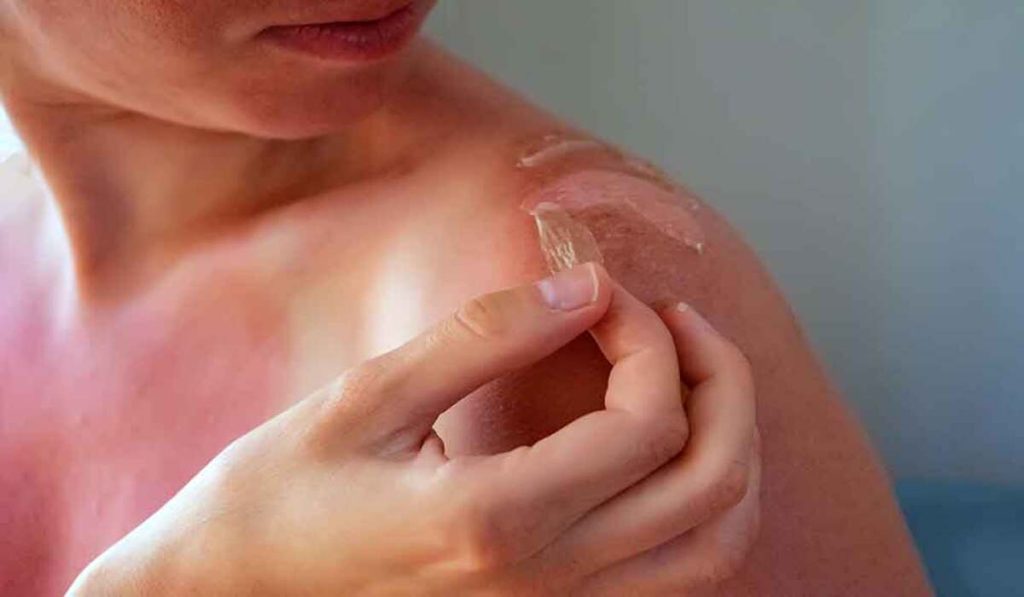
To prevent your sunburn in future, you must not delay the application of sunscreen. Applying a sunscreen with SPF 30 or higher can actually absorb most of ultraviolet radiation from the sun. If you tend to forget to reapply sunscreen, it would become difficult to prevent sunburn and its aftermath. So, carry sunscreen with you wherever you go. If there is severe pain or you develop more symptoms, consult a doctor.
